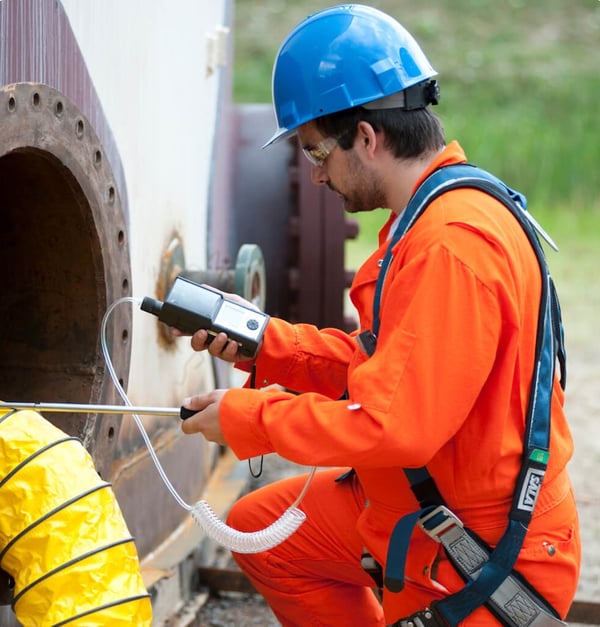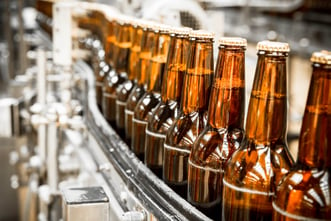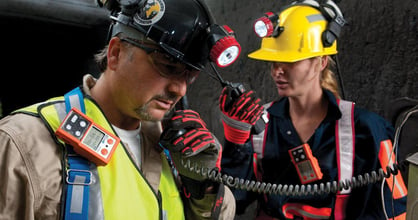Ammonia Detector (NH3)
Ammonium hydroxide, also known as aqueous ammonia, is a common solvent in cleaning products and ingredient in food products and fertilizers. Anhydrous ammonia (NH3) is the pure gas or compressed liquid form of ammonia that contains no water. This form is used in fertilizers, explosives, agriculture, cleaning fluids, and certain pharmaceuticals. Food and beverage companies also use many tons of ammonia for refrigeration, flash freezing, and bulk storage, all running the risk of gas releases. Talk to one of our experts today about our ammonia detector and other gas detector products.

Characteristics of Ammonia (NH3)
Ammonia can be found in a variety of common industrial environments. It's a colorless gas with a pungent suffocating odor. Ammonia is characterized as a flammable although it is very difficult to ignite. When exposed to heat, an ammonia solution will decompose to form ammonia gas and oxides of nitrogen (NOx). Ammonia is an irritant and will become extremely irritating to anyone exposed to it as concentrations increase. Use an ammonia detector to keep workers safe on the job.
More about Ammonia


AMMONIA - NH3
Effects of Various NH3 Levels
How to Detect Ammonia
Industrial Scientific has a range of ammonia detector products, including: single-gas detector GasBadge® Pro, multi-gas detectors Ventis® Pro5 and MX6 iBrid®, and the Radius® BZ1 Area Monitor. Our ammonia detector products reliably detect low ppm ammonia within a specified range.
Frequently Asked Questions
What is Ammonia (NH3)?
Ammonia (NH3) is a colorless gas with a strong, pungent odor. It is composed of nitrogen and hydrogen atoms and is highly soluble in water. Ammonia is widely used in agriculture as a fertilizer and in various industrial processes, including refrigeration, cleaning, and chemical manufacturing.
Why is Ammonia (NH3) detection important?
Ammonia (NH3) detection is critical for ensuring safety in environments where it is used or produced. Ammonia is toxic and can cause severe health issues upon exposure. Detecting NH3 leaks or emissions helps prevent harmful exposure, protects workers, and ensures compliance with safety regulations. Monitoring ammonia levels is essential in agriculture, industrial, and laboratory settings.
What are the health effects of Ammonia (NH3) exposure?
Exposure to Ammonia (NH3) can lead to various health effects. Inhalation can irritate the respiratory tract, causing coughing, shortness of breath, and throat irritation. High concentrations may result in severe respiratory distress or lung damage. Skin contact can cause burns, while eye exposure can lead to severe irritation and potential blindness. Prolonged exposure can result in chronic respiratory issues.
How do you detect Ammonia (NH3)?
Ammonia (NH3) is detected using various types of sensors and detectors, including electrochemical, semiconductor, and photoacoustic sensors. Electrochemical sensors are commonly used in portable gas detectors for real-time monitoring. Semiconductor sensors are employed in industrial settings for their sensitivity and accuracy. These devices are essential for maintaining safe NH3 levels in various environments. Industrial Scientific also offers a range of NH3 detectors, including portable gas detectors and gas monitoring software systems, to best fit your needs.


